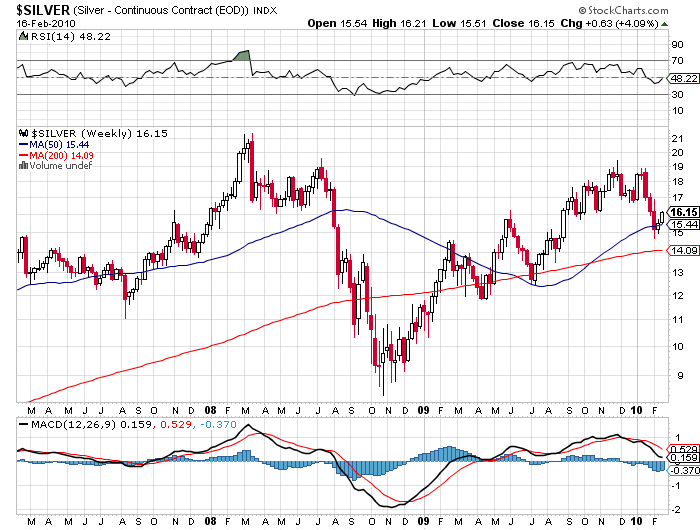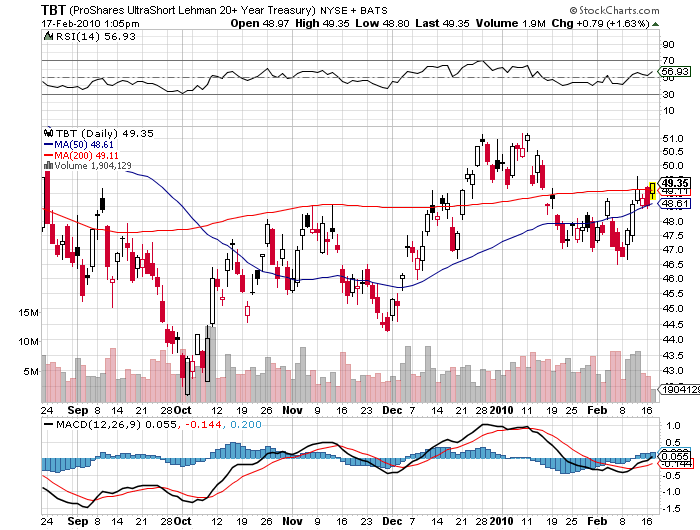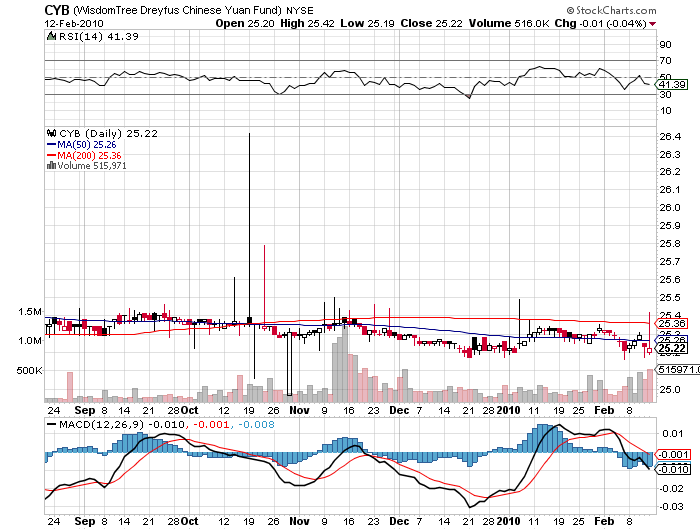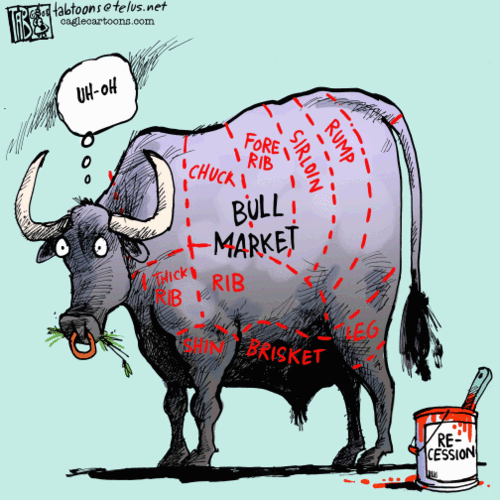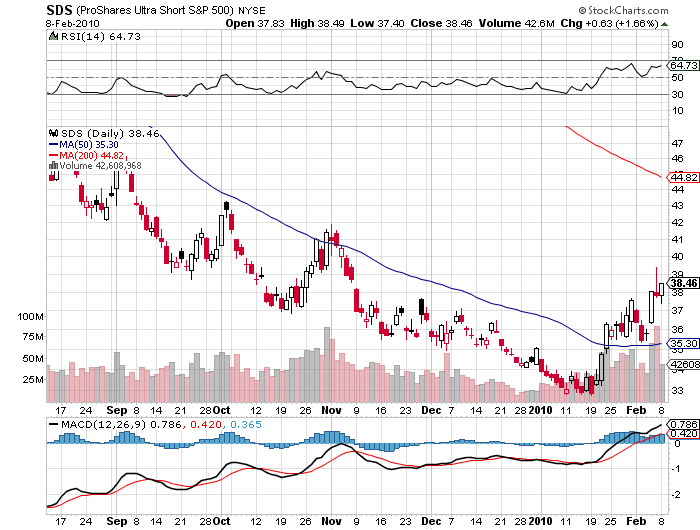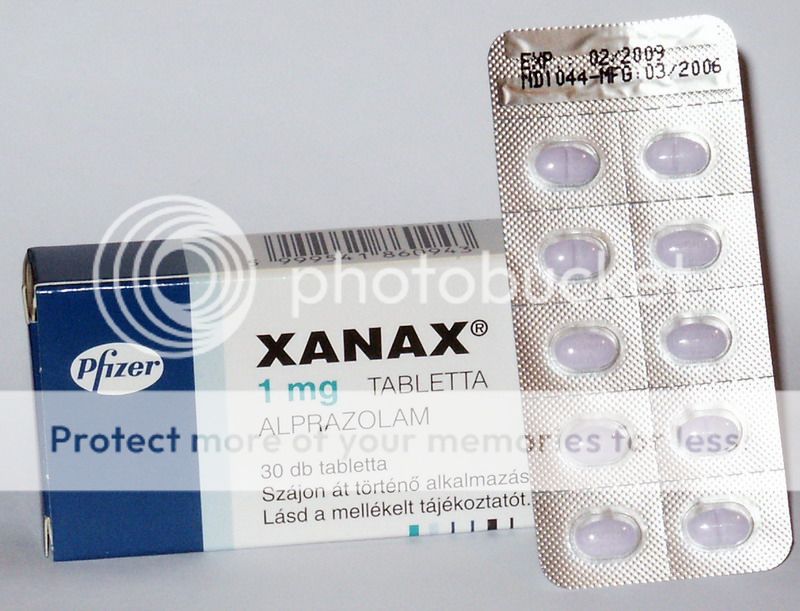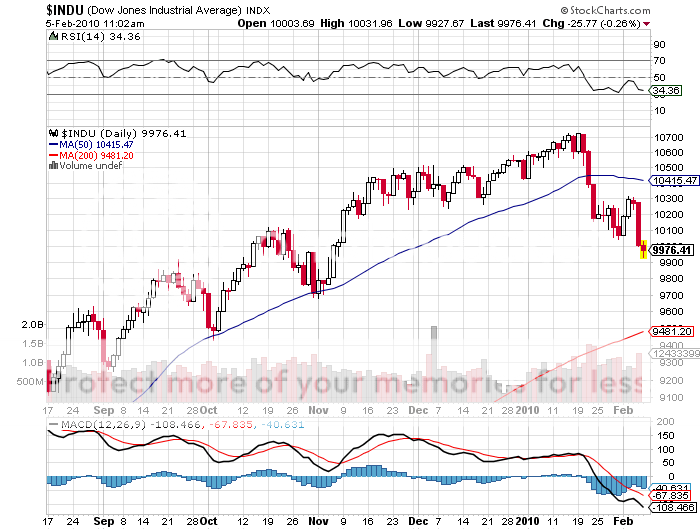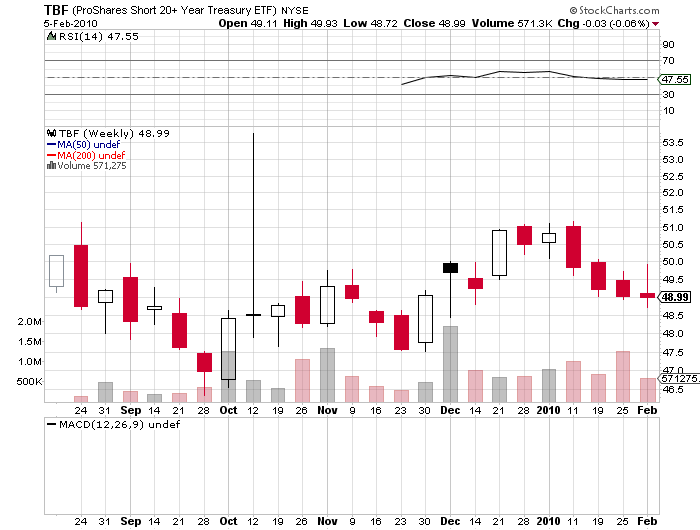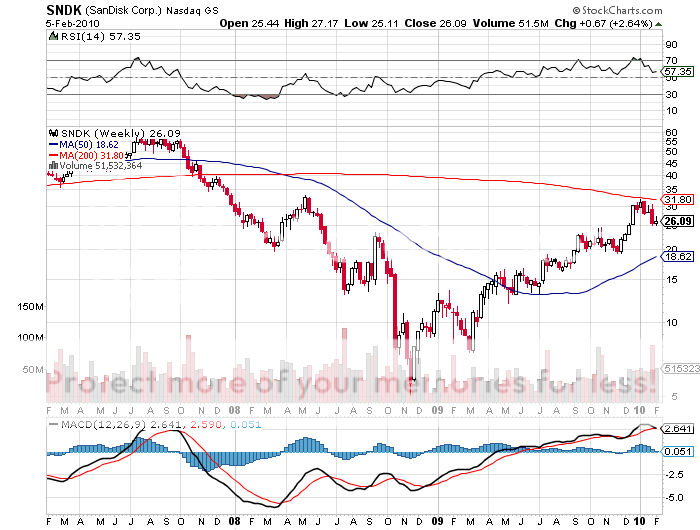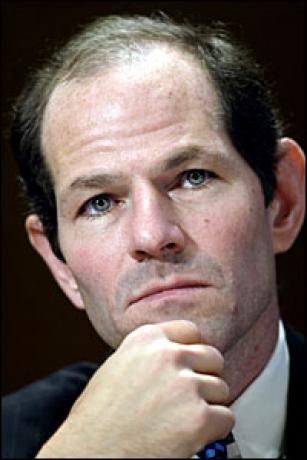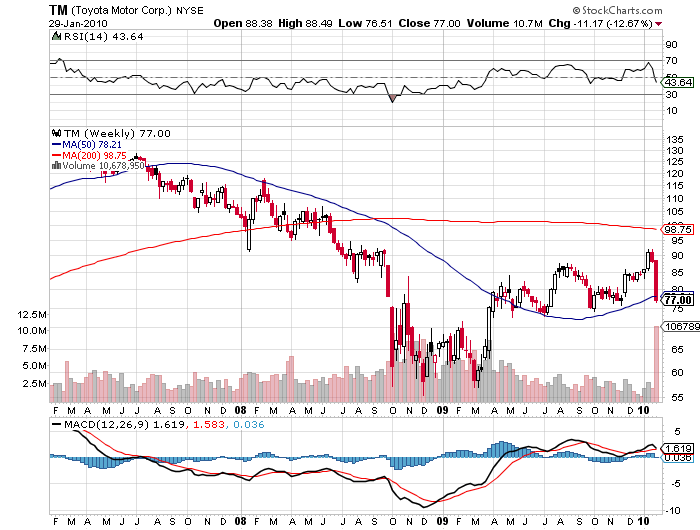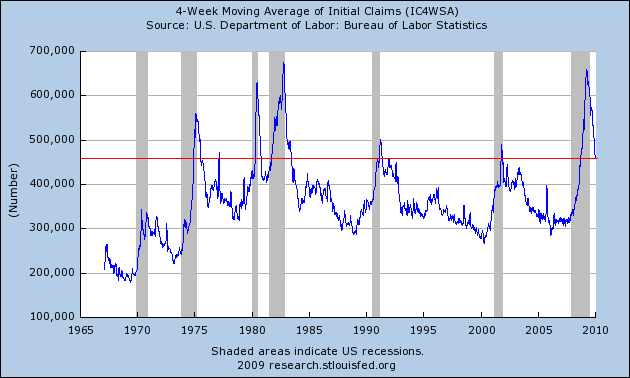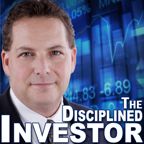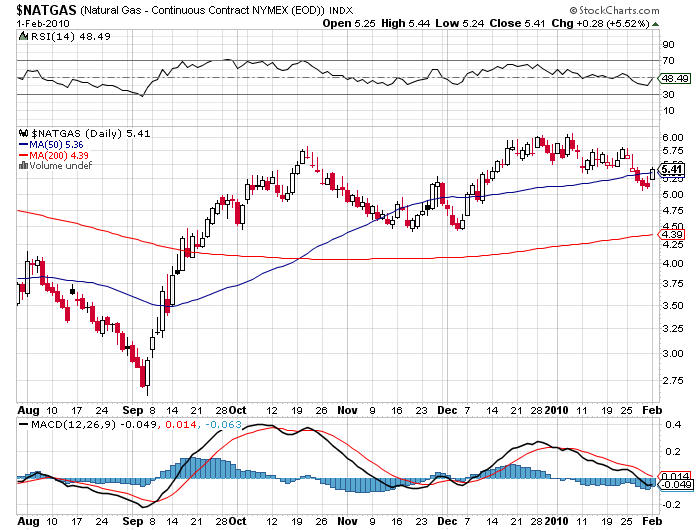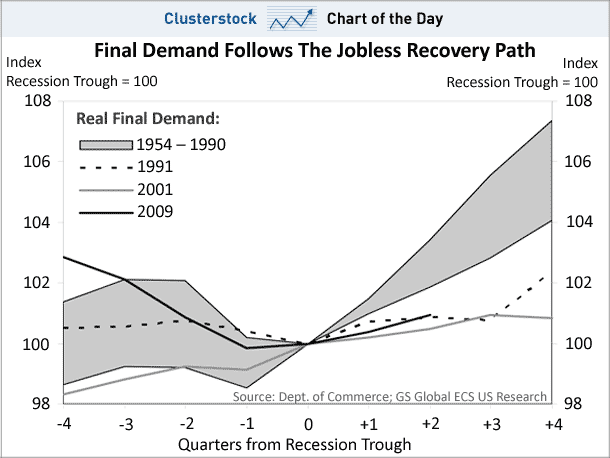
Global Market Comments
February 18, 2010
Featured Trades: (USO), (CRUDE), (SILVER),
(FOREIGN TREASURY HOLDINGS),
(TBT), (TBF), (HEDGE FUND RADIO)
1) I?m not buying the $8 rally in crude (USO) this week because the contango which has been supporting prices in the face of lukewarm demand for the past year has been rapidly disappearing. Contango involves buying crude on the spot market, taking delivery, storing it in leased supertankers, and reselling it in the forward market for returns that at times have exceeded a non leveraged 100%. This enabled the US hedge fund community to effectively operate the world?s second largest navy, keeping so many ships bulging with Texas tea you could almost walk across the Caribbean without getting your ankles wet. At the peak, there were thought to be over 100 ships slow steaming in circles to conserve fuel, creating enough demand to support charter rates globally. By my calculation, the annualized contango return has recently shrunk to a mere 7.12%, not much more than you can get with investment grade corporate bonds. That means when the current crop of forward contracts expire, they won?t be rolled over, dumping vast amounts of crude on the open market. Another factor cutting the knees out from under crude has been the recently strong dollar. Many managers last year found a barrel of oil a much more desirable hard currency than our flaccid greenback. That monetary demand now seems to be on hold. Don?t buy any more oil at these prices than you can use in your salad dressing. If the economy does slow in the second half, as many are predicting, it will be nice to buy your own tankers full of crude at lower prices.
2) If you missed the great run up in silver last year that saw prices run up 95%, you are being offered a second bite at the apple. The latest round of risk reduction by global hedge fund has bashed the white metal, knocking $5 off of the $19.50 high seen in the heady days of November. Today we are at $16.15, and it looks like the 200 day moving average at $14.09 will hold. The metal is at the bottom end of its historic valuation relative to gold, which has ranged between 12:1 (Remember the Hunt Brothers?) and 70:1. Geologically, silver is 17 times more common than the yellow metal. All of the gold ever mined is still around, from King Solomon?s mine, to Nazi gold bars in Swiss bank vaults, and would fill two Olympic sized swimming pools. But most of the silver mined has been consumed in various industrial processes, and is sitting at the bottom of toxic waste dumps. Silver did take a multiyear hit when the world shifted from silver based films to digital photography during the nineties. Now rising standards of living in emerging countries are increasing the demand for silver, especially in areas where there is a strong cultural preference for the jewelry, as in Latin America. That means we are setting up for a classic supply demand squeeze. I think we could run to the old high of $50/ounce in the next economic cycle, if another monetary crisis doesn?t get us there first. Since silver can trade with double the volatility of gold, this forecast could prove conservative.? You can buy the futures, where a 5,000 ounce contract worth $80,700 on the COMEX carries a margin requirement of only $6,750. You can also buy one ounce American silver eagle .9993% pure coins, but make sure you have a big safe to accumulate a serious position.
3) Make my sushi order a double. The latest figures from the Treasury Department for December show that Japan is now the largest holder of US government debt. China slipped to the number two position after unloading $34.2 billion in paper in December, paring its holdings to a mere $755.4 billion. This is an ominous development for several reasons. Japan has the world?s worst demographic outlook, with the number or retirees skyrocketing relative to the number of wage earners. Soon the country will have to start drawing down its substantial savings to offset falling contributions from a shrinking workforce. Today?s firm hands will become tomorrow?s loose ones, as Japan inevitably flips from a buyer to a seller of American debt. Chinese liquidation of its holdings also does not bode well for future sales, and could become the lead up to our first failed Treasury auction. I have been warning about such a possibility for months now, and see it as the triggering event for a cataclysmic collapse of the bond market, and the spike up in yields. If this comes to pass, you can kiss that recovery goodbye. Keep trading the (TBF) and the (TBT) from the long side, and explore some outright shorts in the 30 bond futures contract.
4) My guest on Hedge Fund Radio this week is Peter Schiff, president of Euro Pacific Capital, one of the country?s leading international fund managers. Peter obtained his degree in finance from the University of California at Berkeley in 1987. In 1996 he set up Euro-Pacific Capital, a firm that has successfully focused on investing in foreign stocks, bonds, gold, and commodities. Peter was the economic advisor to libertarian Ron Paul?s 2008 presidential campaign. Today Peter is running for the US senate seat in Connecticut that will soon be vacated by the retiring senator Chris Dodd. Peter is a man of strong beliefs and opinions, which he will be more than happy to share with us. We will be talking about investment strategies to survive the coming debacle, and of course, politics. Hedge Fund Radio is broadcast every Saturday morning at 12:00 pm Eastern time, 11:00 am Central time, 9:00 am Pacific Coast Time, and 5:00 pm Greenwich Mean Time. For the online link to the live show, please go to www.bizradio.com , click on ?Listen Live!?, and click on ?Houston 1180 AM KGOL.?? For archives of past Hedge Fund Radio shows, please go to my website by clicking here
QUOTE OF THE DAY
?We are no longer the locomotive in the world economy. We?re the passenger, and occasionally the caboose,? said Clark Winter, CIO at SK Investment Partners, about the Chinese flag hanging outside the New York Stock Exchange last week.

Global Market Comments
February 16, 2010
Featured Trades: (CHINESE YUAN),
(CYB), (PLATINUM), (PPLT), (EWT)
1) The Chinese Yuan is just begging for a home run. Any doubts that it is a huge screaming buy should have been dispelled last week when news came out that China had displaced Germany as the world's largest exporter. The Middle Kingdom shipped $1.2 trillion in goods in 2009, compared to only $1.1 trillion for Deutschland. The US has not held the top spot since 2003. China's surging exports of electrical machinery, power generation equipment, clothes, and steel were a major contributor. German exports were mired down by lackluster economic recovery in the EC, which has also been a major factor behind the weak euro. Sales of luxury Mercedes and BMW cars, machinery, and chemicals have cratered.
Two back to back interest rate rises for the Yuan, and a snugging of bank reserve requirements to 16% by the People's Bank of China, have stiffened the backbone of the Yuan even further. That is the price of allowing the Federal Reserve to set China's monetary policy via a fixed Yuan exchange rate. Is it possible that Obama's stimulus program is reviving China's economy more than our own?
The last really big currency realignment was a series of devaluations that took the Yuan down from a high of 1.50 to the dollar in 1980. By the mid nineties it had depreciated by 84%. The goal was to make exports more competitive. The Chinese succeeded beyond their wildest dreams. There is absolutely no way that the fixed rate regime can continue. There are only two possible outcomes. An artificially low Yuan has to eventually cause the country's inflation rate to explode. Or a global economic recovery causes Chinese exports to balloon to politically intolerable levels. Either case forces a major revaluation. Of course timing is everything. It's tough to know how many sticks it takes to break a camel's back. Talk to senior officials at the People's Bank of China, and they'll tell you they still need a weak currency to develop their impoverished economy. Per capita income is still at only $5,000, a tenth of that of the US. But that is up a lot from $100 in 1978. Talk to senior US Treasury officials, and they'll tell you they are amazed that the Chinese peg has lasted this long. How many exports will it take to break it? $1.5 trillion, $2 trillion, $2.5 trillion? It's anyone's guess. One thing is certain. A free floating Yuan would be at least 50% higher than it is today, and possibly 100%. In fact, the desire to prevent foreign hedge funds from making a killing in the market is a not a small element in Beijing's thinking. The Chinese Central bank governor, Zhou Xiaochuan, says he won't entertain a revaluation for the foreseeable future. The Americans say they need it tomorrow. To me, that means about six months. Buy the Yuan ETF, the (CYB). Just think of it as an ETF with an attached lottery ticket. If the Chinese continue to stonewall, you will get the token 2.2% annual revaluation the swaps have been discounting. Since the chance of the Chinese devaluing is nil, that beats the hell out of the zero interest rates you now get with T-bills. If they cave, then you could be in for a home run.
2) Since you've been romancing gold, you should check out platinum, her younger, racier, and better looking sister who wears the low riders. The white metal had a 67% pop last year, compared to the more sedentary 44% appreciation seen in gold. While gold made a hard fought all time high, Pt has to rise a further 50% from here just to match its 2008 high of $2,200, suggesting that some catch up play is in order. I have always been puzzled by the fact that platinum is 30 times more rare than gold, but at $1,480 an ounce, it trades at a mere 30% premium to the barbaric metal. You have to refine a staggering 10 tons of ore to come up with a single ounce of platinum. The bulk of the world's 210 tons in annual production comes from only four large mines, 80% of it in South Africa, and another 10% in the old Soviet Union. All of these mines peaked in the seventies and eighties, and have been on a downward slide since then. That overdependence could lead to sudden and dramatic price spikes if any of these are taken out by unexpected floods, strikes, or political unrest. While no gold is consumed, 50% of platinum production is soaked up by industrial demand, mostly by the auto industry for catalytic converters. No lesser authority than Jim Lentz, the CEO of Toyota Motors Sales, USA, told me he expects the American car market to recover from the current 11 million units to 15-16 million units by 2015. That's a lot of catalytic converters. Jewelry demand for platinum, 95% of which comes from Japan, is also strong, as the global pandemic of gold fever spreads to other precious metals. You can trade Platinum futures on the New York Mercantile Exchange, where a margin requirement of only $6,075 for one contract gets you exposure to 50 ounces of platinum worth $75,000, giving you 12:1 leverage. Email me at madhedgefundtrader@yahoo.com if you want to learn how to do this. For those who like to get physical, the US mint issues Platinum eagles from 1997-2008 in nominal denominations of $100 (one ounce), $50 (?? ounce), $25 (1/4 ounce) and $10 (1/10th ounce) denominations. Stock traders should look at the ETF (PPLT).
3) The handful of Chinese army officers I huddled with in the underground bunker all stared intently at their watches. Three, two, one, and then KABOOM! At exactly 12:00 noon, the blast of distant artillery sent a five inch shell screaming over our heads and exploded into the hill above us. The ground shook under our feet, causing dust to drift down from the concrete ceiling above us.?? It was 1976, and The People's Republic of China just let lose its daily symbolic protest against its errant rebellious province, known locally as the Republic of China, and to you and me, as Taiwan. Fast forward 34 years later and the Middle Kingdom is sending salvos of money raining down on that prosperous island. Last year, China Mobile (CHL), the world's largest cell phone company, bought 12% of Far Eastone Telecommunications (4904.Taiwan). Although a small deal, it represented the first ever direct investment from China into Taiwan. The move could trigger a takeover binge by big Chinese companies of their offshore cousins. It was only a few years ago Taiwanese businessmen suffered long prison terms for just visiting, let alone investing in China, which they have done in a major, but surreptitious way, for 30 years. Readers of this letter are well aware of my aggressive recommendations to buy emerging markets China and Taiwan since the beginning of 2009. Now you have another reason to buy both. Closer ties between China and Taiwan auger well for the stock markets of the two high growth countries. The iShares MSCI Taiwan fund ETF (EWT) at one point were up an impressive 125% from the March lows, so if you see a substantial dip it might be a good idea to double up. I guess Beijing figured out that if you can't beat them, buy them. The proxy takeover bid is mightier th
an the sword.
'A statistical model built around a normal distribution when applied to markets can be a very dangerous thing,' said David Kelly of JP Morgan.
February 11, 2010
Featured Trades: (EUROYEN CROSS), (GOLD), (GLD),
(CBS), (SISI), (HTZ), (RAD), (M), (LVS), (AMD),
(AMR), (CAL), (S), (HEDGE FUND RADIO)
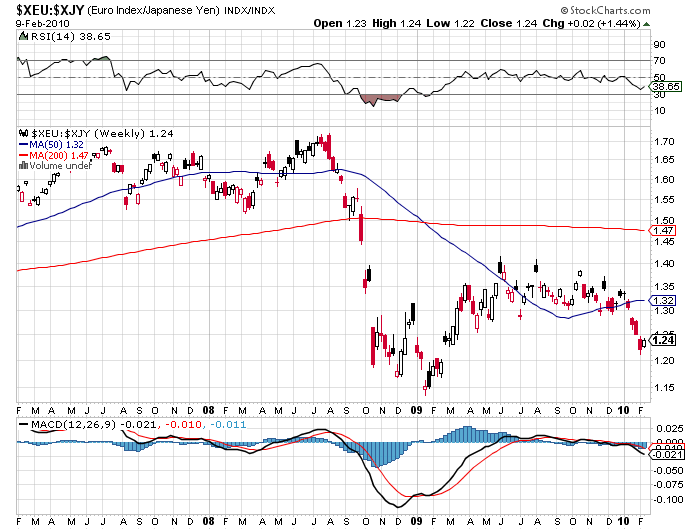

2) Brace yourself for the impending gold shortage. Gold shortage? Yup. With the launch of a flurry of dedicated gold ETF?s last year, total ETF holdings of the barbaric relic, now exceed total world production. South Africa suffered its steepest decline in gold production since 1901, falling 14%, to a mere 232 tons. It now ranks only third in global production of the yellow metal, after China and the US. Severe electricity rationing, a shortage of skilled workers, and more stringent mine safety regulations have been blamed. Choked off credit has frozen the development of new capital intensive deep mines, and existing mines are easily flooding. Rising production costs have driven the global break even cost of new gold production up to $500 an ounce. It takes a lot of labor, fuel, and heavy machinery to rip gold out of the ground, and none of these are getting any cheaper. Political risks are heating up. In the meantime, the financial crisis has driven flight to safety demand for gold bars and coins to all time highs. Last year, the US Treasury ran out of blanks for one ounce $50 American Gold Eagle coins, now worth about $1,160. Competitive devaluations by almost every central bank, except Japan, mean that currencies are not performing as the hedge that many had hoped. It all has the makings of a serious gold shortage for the future. The current downturn has to be just a blip in the long term bull market. Now that we are solidly over $1,000, and recently kissed $1,225, the match could hit the fuel dump at any time. Just let this current risk reversal burn out before you load the boat.
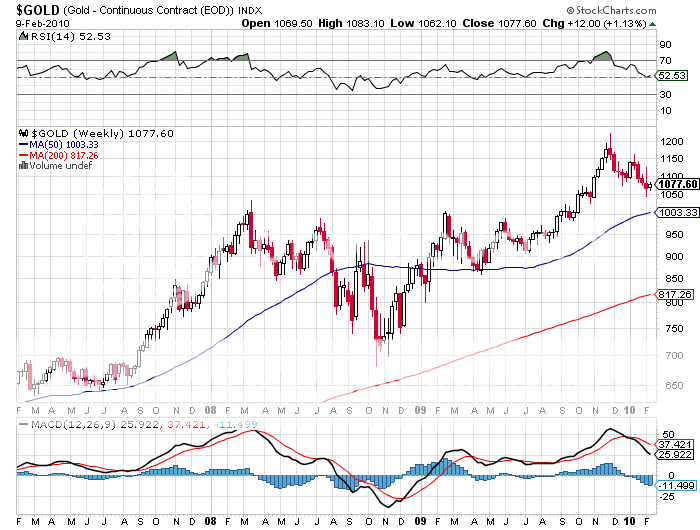

3) Fear of law suits prevents most analysts from publishing lists of short selling targets. But the Audit Integrity Co., a forensic accounting firm,?? regularly posts lists of public companies they believe may go bankrupt (see http://www.auditintegrity.com). Many of their picks reflect the accelerating shift from the old economy to the new economy. With offices in New York and Los Angeles, they look at leverage, market position, debt, and their own proprietary indicators. Another red flag are the legal shenanigans that companies resort to when coming out of a recession, like writing off large amounts of good will. In the media space, CBS (CBS), Sirius XM Radio (SIRI), and Hertz Global (HTZ) are at risk. In the consumer field, Rite Aid (RAD), Macy?s (M), and Las Vegas Sands (LVS) made the list. Advanced Micro Devices (AMD) is the largest tech company to warrant scrutiny. Airlines, always a favorite of bankruptcy mavens, include American Airlines (AMR), and Continental (CAL). Sprint Nextel (S) tops the list of telecom companies. Better take that portfolio out and give it a good scrubbing.
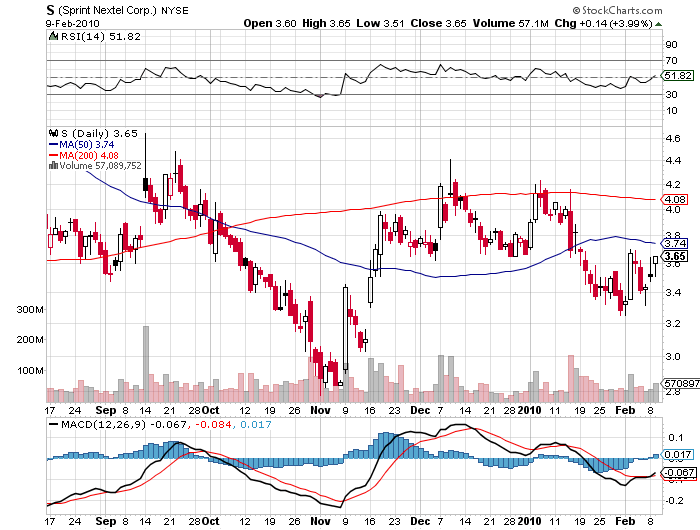
4) My guest on Hedge Fund Radio this week is the legendary commodities trader Dennis Gartman. Dennis has been in the market since they traded rocks for pre-Cambrian settlement. Dennis has published his daily ?Gartman Letter? since 1987, which is a must read for hedge fund managers, major corporations, banks, prop desks, and hedge funds. Dennis started his career as an economist for ?Cotton, Inc,? where he analyzed cotton supply and demand for the US textile industry. He went on to trade foreign exchange for NCNB National Bank in Charlotte, North Carolina, and to trade bond futures as an independent member of the Chicago Board of Trade. He then managed the futures brokerage operation of Sovran Bank. Dennis recently served as an outside director of the Kansas City Board of Trade, and taught classes on derivatives at the Federal Reserve school for bank derivatives. Dennis is going to share his thoughts with us on stocks, bonds, currencies , commodities, and the economy. Hedge Fund Radio is broadcast every Saturday morning at 12:00 pm Eastern time, 11:00 am Central time, 9:00 am Pacific Coast Time, and 5:00 pm Greenwich Mean Time. For the online link to the live show, please go to www.bizradio.com , click on ?Listen Live!?, and click on ?Houston 1180 AM KGOL.?? For archives of past Hedge Fund Radio shows, please go to my website by clicking here
QUOT
E OF THE DAY
?Making money on a trade is like getting applause, but you are the only one who hears it,? said Jon Najarian, an ex Chicago bears linebacker who now runs optionmonster.com.

Global Market Comments
February 10, 2010
Featured Trades: (SPX), (SDS), (BERNIE MADOFF), (CIA), (DBA), (MOO), (MON), (MOS), AGU), (POT)
1) Note to self. Don't do your midnight pee next to the bear box. They're called that for a reason. And I'm sorry that my shouting at the hungry, six foot tall black bear standing in front of me, no doubt attracted by my Cheetos, hot dogs, and marshmallows, woke up the campers at the 57 surrounding sites. Of course it was too dark to find my bear spray. My ursine challenger eventually saw the merit of my logic that the neighbor's bacon stuffed ice chest was more appealing than me, and lumbered off into the darkness. I have successfully avoided a bear of a different sort this year, those of the stock market kind (see my January 4 Annual Asset Allocation Review piece entitled 'I'd Rather Get a Poke in the Eye with a Sharp Stick Than Buy Equities'). Never have I seen such a disconnect between the markets and the real economy. All of a sudden the world has gotten expensive. Stock prices have been levitated by vapor in a faith based rally. Cost cutting, not sales growth, has artificially boosted earnings above subterranean forecasts. Commodity prices have soared because of stockpiling and speculation, not consumption. Puzzled CEO's of many stripes are seeing no recovery in their businesses whatsoever. I have used the big up days to sell short dated out-of- the-money calls which, mercifully, expired worthless. That's because I keep my favorite quote from John Maynard Keynes pasted to my monitor, 'Markets can remain irrational longer than you can remain liquid.' Sure we're going down more, but zero interest rates won't let us crash. Date that SDS position, a 200% leveraged bet that the S&P 500 is going to fall, but don't marry it.
2) I spent a sad and depressing, but highly instructional evening with Dr. Stephen Greenspan, who had just lost most of his personal fortune with Bernie Madoff. The University of Connecticut psychology professor had poured the bulk of his savings into Sandra Mansky's Tremont feeder fund; receiving convincing trade confirms and rock solid custody statements from the Bank of New York. This is a particularly bitter pill for Dr. Greenspan to take, because he is an internationally known authority on Ponzi schemes, and just published a book entitled Annals of Gullibility-Why We Get Duped and How to Avoid It. It is a veritable history of scams, starting with Eve's subterfuge to get Adam to eat the apple, to the Trojan Horse and the Pied Piper, up to more modern day cons in religion, politics, science, medicine, and yes, personal investments. Madoff's genius was that the returns he fabricated were small, averaging only 11% a year, making them more believable. In the 1920's, the original Ponzi promised his Boston area Italian immigrant customers a 50% return every 45 days. Madoff also feigned exclusivity, often turning potential investors down, leading them to become even more desirous of joining his club. For a deeper look into Greenspan's fascinating, but expensively learned observations and analysis, go to his website at www.stephen-greenspan.com.
4) Lunch with the Central Intelligence Agency is always interesting, although five gorillas built like brick shithouses staring at me intently didn't help my digestion. When Panetta passed through town on his way home to heavenly Carmel Valley for the holidays, I thought I'd pull a few strings in Washington to catch a private briefing. The long term outlook for supplies of food, natural resources, and energy is becoming so severe that the CIA is now viewing it as a national security threat. About one third of emerging market urban populations are poor, or about 1.5 billion souls, and when they get hungry, angry, and politically or religiously inspired, Americans have to worry. This will be music to the ears of the hedge funds that have been stampeding into food, commodities, and energy, since March. Panetta then went on to say that the current monstrous levels of borrowing by the Federal government abroad is also a security issue; especially if foreigners decide to turn the spigot off and put us on a crash diet. I was flabbergasted, not because this is true, but that it is finally understood at the top levels of the administration and is of interest to the intelligence agencies. Job one is to defeat Al Qaeda, and the agency has had success in taking out several terrorist leaders in the tribal areas of Pakistan with satellite directed predator drones. The CIA could well win the war in Afghanistan covertly, as they did the last war there in the eighties, with their stinger missiles supplied to the Taliban for use against the Russians. The next goal is to prevent Al Qaeda from retreating to other failed states, like Yemen and Somalia. Cyber warfare is a huge new battlefront. Some 100 countries now have this capability, and they have stolen over $50 billion worth of intellectual property from the US in the past year. As much as I tried to pin Panetta down on who the culprits were, he wouldn't name names, but indirectly hinted that the main hacker-in-chief was China. I thought Panetta was incredibly frank, telling me as much as he could without those gorillas having to kill me afterwards. I have long been envious of the massive budget that the CIA deploys to research the same global markets that I have for most of my life, believed to amount to $70 billion, but even those figures are top secret. Panetta's final piece of advice: don't even think about making a cell phone call in Pakistan. I immediately deleted the high risk numbers from my cell phone address book. Better take another look at the Market Vectors agricultural ETF (DBA), their agribusiness ETF (MOO), as well as my favorite ag stocks, Monsanto (MON), Mosaic (MOS), Potash (POT), and Agrium (AGU). Accidents are about to happen in their favor.
'The next Pearl Harbor will be a cyber attack,' Said Leon Panetta, Director of the CIA.

Featured Trades:
(THE MAD HEDGE FUND TRADER?S STRATEGY LUNCHEONS), (DEMOGRAPHIC TRENDS),
(CYB), (EEM), (USO), (GLD), (SHREVE?S), (?SNOWMAGEDDON?)
2) You can never underestimate the importance of demographics in shaping long term investment trends, so I thought I?d pass on these two maps, which I pulled off of Paul Kedrosky?s Infectious Greed website. The first shows a map of the world drawn in terms of the population of children, while the second illustrates the globe in terms of its 100 year olds. Notice that China and India dominate the children?s map. Kids turn into consumers in 20 years, stay healthy for a long time, and power economic growth. The US, Japan, and Europe shrink to a fraction of their actual size on the children?s map, so economic growth is in a long term secular downtrend there. There is more bad news for the developed world on the centenarian?s map, which show these countries ballooning in size to unnatural proportions. This means higher social security and medical costs, plunging productivity, and falling GDP growth. The bottom line is that you want to own equities and local currencies of emerging market countries, and avoid developed countries like the plague. This is why we saw a doubling, tripling, and quadrupling of emerging stock markets (EEM) last year, and why there is an irresistible force pushing their currencies upward (CYB). (see my Yuan revaluation piece by clicking here

3) A few years ago, I went to a charity fund raiser at San Francisco?s priciest jewelry store, Shreve & Co., where the well heeled men bid for dinner with the local high society beauties, dripping in diamonds and Channel No. 5. Well fueled with champagne, I jumped into a spirited bidding war over one of the Bay Area?s premier hotties, who shall remain nameless. Suffice to say, she has a sports stadium named after her. The bids soared to $6,000, $7,000, $8,000. After all, it was for a good cause. But when it hit $10,000, I suddenly developed lockjaw. Later, the sheepish winner with a severe case of buyer?s remorse came to me and offered his date back to me for $9,000.?? I said ?no thanks.? $8,000, $7,000, $6,000? I passed. The current altitude of the stock market reminds me of that evening. If you rode gold (GLD) from $800 to $1,200, oil (USO), from $35 to $80, and the (FXI) from $20 to $40, why sweat trying to eke out a few more basis points, especially when the risk/reward ratio sucks so badly, as it does now? I realize that many of you are not hedge fund managers, and that running a prop desk, mutual fund, 401k, pension fund, or day trading account has its own demands. But let me quote what my favorite Chinese general, Deng Xiaoping, once told me: ?There is a time to fish, and a time to hang your nets out to dry.? At least then I?ll have plenty of dry powder for when the window of opportunity reopens for business. So while I?m mending my nets, I?ll be building new lists of trades for you to strap on when the sun, moon, and stars align once again. And no, I never did find out what happened to that date.
4) While Obama?s White House staff is digging out from ?snowmageddon,? a potential nightmare is giving him sleepless nights. Let?s say we spend our $2 trillion in stimulus and get a couple of quarters of decent growth. The ?V? is in. Then once the effects of record government spending wear off, we slip back into a deep recession, setting up a classic ?W.? Unemployment never does stop climbing, reaching 15% by year end, and 25% when you throw in discouraged job seekers, jobless college graduates, and those with expired unemployment benefits. This afflicted Franklin D. Roosevelt in the thirties. So Congress passes another $2 trillion reflationary budget. Everybody gets wonderful new mass transit upgrades, alternative energy infrastructure, smart grids, and bridges to nowhere. But with $4 trillion in extra spending packed into two years, inflation really takes off. The bond market collapses, as China and Japan boycott the Treasury auctions. The dollar tanks big time, gold breaks $2,300, and silver explodes to $50. Ben Bernanke has no choice but to engineer an interest rate spike to dampen inflationary fires and rescue the dollar, taking the Fed funds rate up to a Volkeresque 18%. %. The stock market crashes, taking the S&P well below the 666 low we saw in March. Housing, having never recovered, drops by half again, wiping out more bank equity, and forcing the Treasury to launch TARP II. The bad news accelerates into the 2012 election year. Obama is burned in effigy; Sarah Palin is elected president, and immediately sets to undoing all of his work. Republicans, reinvigorated by new leadership, and energized by a failing economy, retake both houses of congress. National health care is shut down as a wasteful socialist mistake, boondoggle subsidies for alternative energy are eliminated, and the savings are used to justify huge tax cuts for high income earners. We invade Iran, and crude hits $500. If you?re over 50, and all of this sounds vaguely familiar, it?s because we?ve been through it all before. Remember Jimmy Carter? Remember the ?misery index,??? the unemployment rate plu
s the inflation rate, which hit 30, and catapulted Ronald Reagan into an eight year presidency? A replay is not exactly a low probability scenario. This is why credit default swaps live at lofty levels. It?s also why the investing public is gun shy, favoring bonds over stocks by a 15:1 margin. Are the equity markets pricing in these possibilities? Not a chance. The risk of economic Armageddon is still out there. Personally, I give it a 50:50 chance. Batten the hatches, and please pass the Xanax.
February 8, 2010Featured Trades: (JANUARY NONFARM PAYROLL),
(TBF), (TBT), (ASML), (CSCO), (JDSU), (MU), (JNPR), (SNDK)
2) I hate to sound like Chicken Little predicting that the sky is falling, but there is a disaster of monumental proportions setting up in the Treasury bond market. Last year investors fleeing the terror of the financial markets poured some $375 billion into bond mutual funds and virtually nothing into equity funds. It makes you wonder who bought all those stocks that drove the S&P 500 up 60% last year. My guess? Hedge funds, day traders, and hot money punters who will puke at the drop of a hat. The flight to quality since mid January has only accelerated the flow into fixed income funds. Treasury bonds, already the world?s more overvalued asset class, are getting more expensive. This will only end in tears, with the retail end investor, once again, left holding the bag. Use this strength to build a core short in the 30 year T-bond, either through the futures market, ETF?s ( TBF for the 100% short and TBT for the 200% short), our outright borrows. I still think this will be the trade of the decade.
3)When the current risk reversal ends, there is one sector that I am going to jump into with both of my size 14 boots. After the dotcom bust of 2000, technology stocks spent nearly a decade in the penalty box, shunned by the investing world as the poster boys for wild excess. During this time, cash balances doubled, free cash flows soared, outstanding shares shrank, and multiples fell to a tenth of their bubblicious peaks. I started recommending this group at the absolute bottom of the market last March (click here for the call ), and it was no surprise to me when they outperformed almost every sector on the upside. With 60%-80% of their earnings coming from abroad, primarily Asia, I saw them really as foreign stocks wearing cowboy hats, pearl snap buttoned shirts, and Ray Ban aviator sunglasses. They were great weak dollar plays. They did not need banks, as they are almost entirely self financed, didn?t have derivatives books, and had minimal real estate exposure. While their customers here were getting poorer, many more overseas were getting richer. The industry represents the last, best hope that America has for competing globally, as it is our only means of staying on top of the international value added chain. It seems that in addition to bulk commodities like corn, wheat, soybeans, coal and timber, aircraft, weapons, and movies, tech companies are among the few that make things foreigners want to buy. The lessons of the bubble made them ultra conservative in their capital spending which will lead to product shortages and much higher prices in any recovery. Memory, for example, has seen no capex at all for three years. They are surfing the wave of innovation, and will cash in big time from the mobile computing revolution, cloud computing, and the virtualization of data centers. During the last tech bubble the industry did not have the global market that it does today. Now, demand from the rising emerging market middle class is kicking in, as it is for commodities. The nine month tech rally we saw in 2009 could? just be the down payment of a decade long bull market in these stocks which will end with another bubble. When John Chambers, a first class manager, discussed Cisco?s (CSCO) outlook after announcing blowout Q4 earnings, he was so effusive he sounded like he was on ecstasy. Take a look at Juniper Networks (JNPR), JDS Uniphase, (JDSU), Sandisk (SNDK), Micron Technology (MU), and lithography toolmaker (ASML). Long dated call spreads in all of these make sense on a decent dip.
?People that have complete disdain for government intervention in the economy and markets of the West have complete faith in nine guys in a room being able to figure out the very complex and rapidly growing Chinese economy,? said hedge fund manager Jim Chanos of Kynikos Associates, about foreign investors? unlimited faith in the Middle Kingdom?s politburo.
February 4, 2010
Featured Trades: (AUSIE/EURO CROSS),
(ELECTRIC CAR MATERIALS DEMAND),
(ELLIOT SPITZER)

2) I found this interesting table from the QVM group that listed the impact that electric cars, which will soon be produced at one million units a year, will have on the supply and demand for raw materials. Here are my comments:
Aluminum: Lighter cars need more aluminum for bodies
Coal: Greater electricity needs increase demand from this cheapest of sources.
Copper: Big increase in demand for copper wire from electric motors and the grid.
Corn: Kiss the pork barrel ethanol program goodbye. Demand falls.
Natural Gas: Some 50% of new power generation facilities are gas fueled.
Lead: Older technology batteries still use lots of lead.
Lithium: You can?t lose. If electric car demand doesn?t kick in, then fertalizer demand will.
Nickel: The same batteries use nickel
Oil: Some analysts think gasoline demand could drop by 50% by 2020 because of electric cars, mileage improvements in conventional cars, and flat growth of the total car market.
Platinum: Demand falls from fewer catalytic converters, but this will be offset by growing monetary demand for the white metal.
Uranium: More power demand means more nukes everywhere.
Zinc: Battery demand again
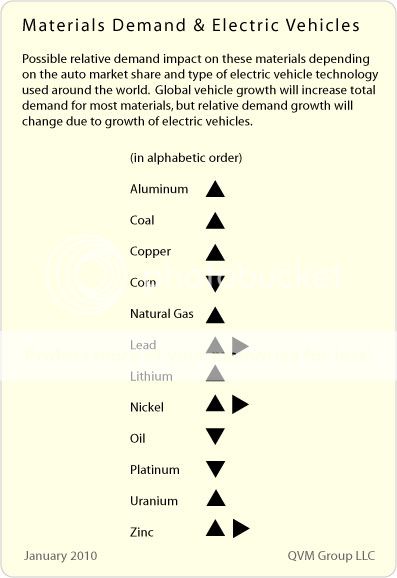
3) I couldn?t for the life of me figure out why New York?s former governor and federal prosecutor, Elliot Spitzer, wanted to invite me to dinner. He wasn?t flogging a book or promoting a movie, and he certainly wasn?t running for office again. But I went anyway, thinking perhaps the notorious ?Client No.9? might let me peek at his famous black book.? Elliot, who showed up wearing a classic New York blue pin stripped suit that seems oddly out of place in San Francisco, is currently teaching at the City College of New York, writing, and running his family?s commercial real estate business. The advantages that the US enjoyed over the rest of the world in 1945, such as a monopoly in skilled labor, are now long gone. The driver of the world economy has switched from America to Asia in the nineties. As a result, income distribution here has morphed from a bell shaped curve to a barbell, with both the wealthy and the poor increasing in numbers, squeezing the middle class. The financial crisis compressed 30 years of change into two, taking us from libertarian Ayn Rand to pay czar Ken Feinberg in one giant leap. Having cut his teeth prosecuting the Gambino crime family in the eighties, Elliot had some views on the need for more regulation. We only need to enforce the laws on the books, not pass new ones. The ?white collarization? of organized crime has been a secular trend since the sixties. He said the ethical lapses in the run up to the crash were best characterized by a quote from Merrill Lynch?s Jack Robins; ?What used to be a conflict of interest is now a synergy.?AIG getting 100 cents on the dollar was the greatest scam in history. The US did not extract a high enough price from highly paid executives and shareholders of financial institutions for failure, and should have let more firms go under. As for his own scandal last year, Elliot admitted that he failed, that his flaws were made publicly apparent, and that other politicians should be smarter than he was. Although Elliot had some good ideas, I was still puzzled over what this was all about as I ploughed through my creme brulee. Perhaps the governor has a pathological need to be in front of the spotlight, even at the risk of flaming out. And no luck with the black book.

QUOTE OF THE DAY
?Screaming from the top of the ramparts is great cardio, but doesn?t give any answers,? said former governor Elliot Spitzer, about the current political debate.
February 3, 2010Featured Trades: (SPX), (QQQQ), (COPPER),
(COPA), (TM), (WEEKLY JOBLESS CLAIMS)
1) Groundhog Punxutawney Phil poked his nose out of his hole and saw his shadow this morning, predicting six more weeks of winter. The Mad Hedge Fund Trader poked his reddened proboscis out the door this morning, saw a substantially larger and longer shadow, and forecast at least six more weeks of crappy markets, and maybe a lot more than that. Looking at the charts this morning, it?s clear that risk taking by managers around the world did a sudden about turn on January 11, and now is in full flight.? The ?carry trade? has suddenly become the ?drop trade.? The S&P 500 (SPX) is off 7% from its high, copper has plunged a puke inducing 55 cents to $3.00, crude evaporated $8, and NASDAQ (QQQQ) has rolled over like the Bismark, shattering 50 day moving averages everywhere. Make no mistake; we have definitely flipped from ?buy the dip? mode to ?sell the rally? mode. Please reread the section in my January 4 Annual Asset Allocation Review entitled I?d Rather get a Poke in the Eye with a Sharp Stick than Buy Equities . For my warning on copper, the only commodity that has a PhD in economics, click here ). The best performers are having the biggest drops. Despite having truckloads of free money dumped upon them, traders are turning up their noses and reeling in risk everywhere. A zero return is suddenly looking like a great option. What is scarier is that I don?t see any potential sudden surprises out there than can reverse this sorry state of affairs any time soon. Put on your foul weather gear, don your life jacket, and man the pumps.
2) Nearly 40 years ago, when I was starving in Japan while waiting for the financial journalism thing to start paying off, I took a weekend job in Hakone to teach managers at Toyota Motors (TM) how to speak English. As we approached the hotel I saw a dozen men lined up out front wearing cheap suits, white shirts, and conservative ties. Each one took turns picking up a baseball bat and beating the daylights out of a severely shredded dummy on the ground before them, screaming a maniacal samurai scream. I asked my driver what the hell was going on. He deadpanned: ?They?re beating the competition.? This was back when Toyota made laughably tiny cars that looked like a giant ostrich eggs on wheels and had to get a running start to get up a freeway onramp. By 2006, the company had seized 18% of the US car market, and GM and Chrysler were wearing a toe tags. Today Toyota, the world?s largest car maker, has been slammed by the perfect storm that has taken its share down to 14.7%. They took eight years to find a defect in an American made accelerator component that caused thousands of accidents, and dozens of deaths, forcing a worldwide recall of 8 million vehicles. Unsurprisingly, the ADR?s here plunged 17% in a heartbeat, to $73. To me, this all adds up to a ?BUY.? You can start with the recall, the largest in history, covering eight models, which promises to be speedy, lavish and generous. It prompted a production shut down, an unprecedented measure in auto history. The company is going all out to reinforce customer loyalty. Toyota still makes great cars. And let?s face it, many people would rather die than drive an American car, this author included. It?s usually a great idea to buy when there is blood in the streets, and in the auto industry it doesn?t get any worse than this. I know the management, the philosophy, and the strengths of this company intimately, and they will come roaring back. Let the ruckus over the recall burn out, and add Toyota to your ?buy on dips? list.
3) Someone once asked PIMCO?s bond king, Bill Gross, if he were stranded on a desert island and could get only one statistic on which to base investment decisions, what would it be? He didn?t hesitate. Initial claims for unemployment insurance, released by the Labor Department every Thursday at 8:30 am EST, gives the best real time snapshot of economic activity. With traders on tenterhooks regarding the near term outlook for jobs, and a fractious midterm election looming, these data are about to become more important than ever. During the first half of 2009, more than 600,000 new claims a week were common. Since then, they have dropped to a still serious 450,000/week, indicating, at best, a tepid recovery. When claims drop below 400,000, the unemployment rate will stop rising, below 350,000 a recovery is in progress, and below 300,000 the boom times are back. The US is unique in seeing a large amount of job switching, even in good times. Keep those eyeballs glued to your screens on Thursday mornings.
QUOTE OF THE DAY
?The investor in America sits t the bottom of the food chain,? said John C. Bogle, founder of the Vanguard Group of index funds.
Global Market Comments
February 2, 2010
Featured Trades: (THE DISCIPLINED INVESTOR), (EWS), (EWZ), (EWY), (EPI), (GOLD), (SILVER), (COAL), (TM), (BOONE PICKENS), (Q4 GDP)
2) Reformed oil man, repenting sinner, and borne again environmentalist T. Boone Pickens says that ?when we turn the US green, it will have the best economy ever.? I met the spry, homespun billionaire at San Francisco?s Mark Hopkins on a leg of his self financed national campaign to get America to kick its dangerous dependence on foreign oil imports. For the past 30 years, the US has had no energy policy because ?no one wanted to kick a sleeping dog? while oil was cheap. Production at Mexico?s main Cantarell field is collapsing, and will force that country to become a net importer in five years. Venezuela is shifting its exports of its sulfur laden crude to China for political reasons, once refineries in the Middle Kingdom are completed to handle it. Unfortunately, unstable energy prices and the disappearance of credit have put alternative energy development on a back burner. If the US doesn?t make the right investments now, our energy dependence will simply shift from one self interested foreign supplier (Saudi Arabia) to another (China), as was highlighted in the recent New York Times article on Sunday (click here for the link? ). Wind and solar alone won?t work on still nights, and can?t power an 18 wheeler. Don?t count on the help of the big oil companies, because they get 81% of their earnings from selling imported oil, and don?t want to kill the goose that laid the golden egg. The answer is a diverse blend of multiple alternative energy supplies from American only sources.? Although Boone now has Obama?s ear, it?s a long learning process. Boone has donated $700 million to charity, and says the 20,000 trees has planted should offset the carbon footprint of his Gulfstream V. I worked with Boone to organize financing for a Mesa Petroleum Pac Man oil company takeover in the early eighties, when it was cheaper to drill for oil on the floor of the New York Stock Exchange than in the field. Now 80, he has not slowed down a nanosecond.
3) As I expected, the Q4 GDP blew out to the topside, coming in at 5.7%, the strongest performance since Q3, 2003. This is clearly what the stock market was seeing as the rally extended through the fall and into the winter, delivering an increasingly gob smacking return. Inventory rebuilding from bare shelf levels was the main impetus. Take that out, and the GDP grew only at a 2.2% rate. Another ominous development was that consumer spending fell from 2.8% to 2%. How an economy can grow without healthy spending by individuals is beyond me. I guess you don?t splurge at the mall over the weekend if you?re worried about getting pink slipped on Monday morning. It?s possible that this robust growth will continue for another quarter, completing the first part of my scenario for the ?square root? shaped recovery. You can also expect some major downward revisions in the headlines 5.7% number, as we have already seen in the past two quarters. For growth to continue from here you need a capital spending binge that will lead to hiring. But having just survived the near death experience of their lives, I don?t know a single businessman who?s will to go out on a limb here. So the ?V? may be in, and we?ll flat line after that.
QUOTE OF THE DAY
?The Roman Empire fell because its last six emperors were all faggots,? said President Richard M. Nixon. He also said that ?I would never shake the hand of someone from San Francisco.? No wonder even his friends hated him.
February 1, 2010
Featured Trades: (PIIGS), (EURO), (GREECE), (GOLD), (DOW/GOLD RATIO), (PRESIDENTIAL STOCK RETURNS)
2)Whenever I am confronted with non believers in gold, I love to pull out the chart below, showing the Dow Jones priced in the barbaric relic and smack them across the face with it. A 20 year bull market in the yellow metal took the stock index from 1.4 ounces in 1980 to a 40 ounce peak at the top of the dotcom bubble in 2000. It has been falling ever since, dropping to a mere 8 ounces by the end of last year. Today it is hovering at 9.2 ounces, but is definitely looking very heavy. When was the prior stock peak? In 1971, when massive deficit spending, spawned by the Vietnam War, forced the Nixon Shock, which freed gold to float from $34/ounce, sending the Dow fleeing from a 30 ounce valuation.?? Do you see any parallels with today? Iraq and Afghanistan maybe? If we return to the 1980 ratio, the Dow Jones has to either fall 85% to 1,540, or gold has to rocket 6.6 times to $7,300/ounce. With the printing presses in Washington running so loudly that my teeth are starting to chatter, I vote for the latter. The most likely outcome is some combination of the two, where we see stagnant or falling stock prices and rising gold. Do I hear $5,000/ounce anyone? My own $2,300 forecast, the old inflation adjusted all time high, is looking more conservative by the day. Me, conservative? Perish the thought!
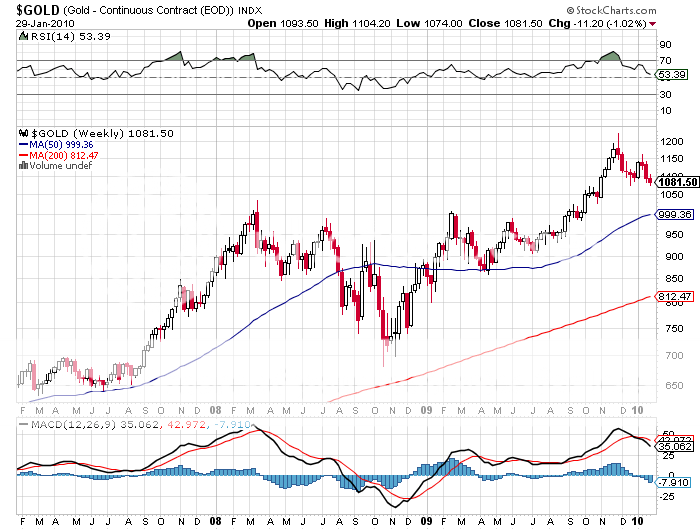

3) Hail to the Stock-Promoter-in-Chief! Given the spectacular performance of the stock market since Obama's inauguration, you might be forgiven for thinking that this was the best record in history. But you would be wrong by a big margin. A bounce back from the 1929 crash delivered an unbelievable 96.5% jump for Franklin Delano Roosevelt in the year leading up to March 4, 1933. He is followed by a postwar boom induced 30.9% appreciation that Harry S. Truman ushered in to January, 1946, the first time the Dow index recovered the 200 level in 17 years. Obama only comes in third with a relatively modest 29.5% pop since his inauguration a year ago. Who brought in the worst return? Jimmy Carter suffered a 19.6% fall during the chronic stagflation of the late seventies. The Vietnam War did likewise to Richard Nixon, with a 17% decline in 1969. Warning to Obama: after FDR's fabulous first year gains, the market struggled for eight more years, until an expected WWII win sent it on a long term upward trajectory. If this president thing doesn't work out for Obama, I guess he can always pursue a career as a Wall Street lawyer.
QUOTE OF THE DAY
'By 2014, the GDP of emerging economies will surpass that of developed economies'?.The most attractive place in the world to invest right now is China' said David Rubenstein, CEO of the Carlyle Group.



